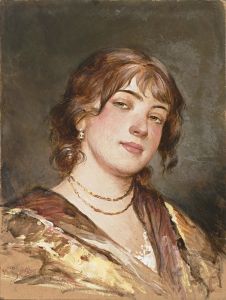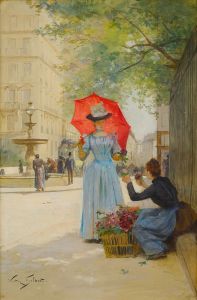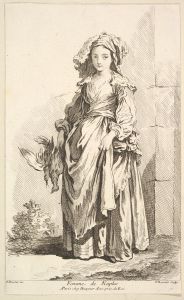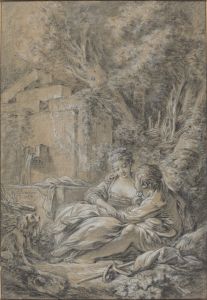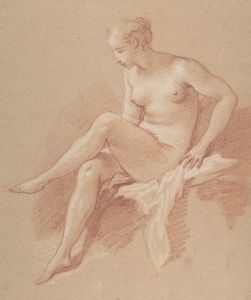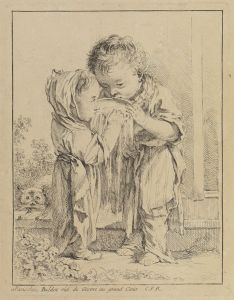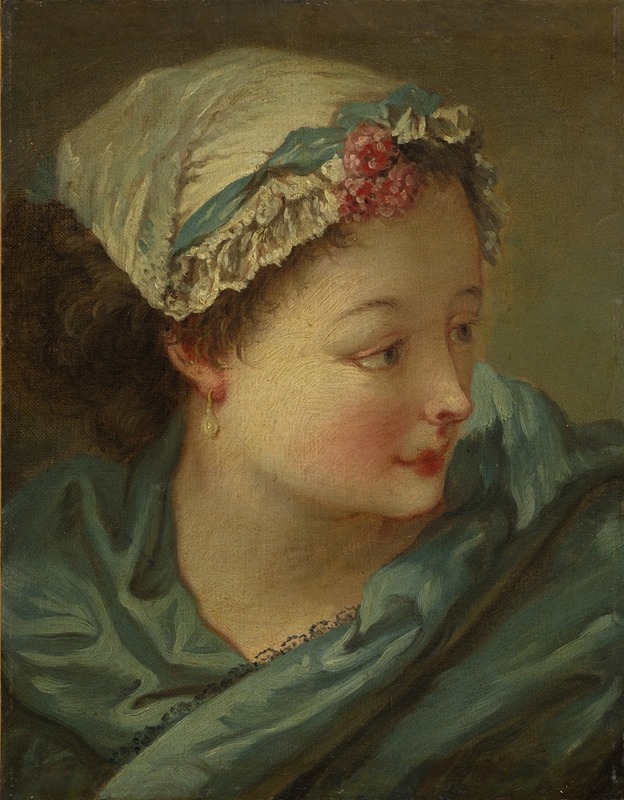
Head of a Young Woman
A hand-painted replica of François Boucher’s masterpiece Head of a Young Woman, meticulously crafted by professional artists to capture the true essence of the original. Each piece is created with museum-quality canvas and rare mineral pigments, carefully painted by experienced artists with delicate brushstrokes and rich, layered colors to perfectly recreate the texture of the original artwork. Unlike machine-printed reproductions, this hand-painted version brings the painting to life, infused with the artist’s emotions and skill in every stroke. Whether for personal collection or home decoration, it instantly elevates the artistic atmosphere of any space.
François Boucher, a prominent French painter of the Rococo period, is renowned for his idyllic and voluptuous paintings that often depict classical themes, pastoral scenes, and portraits. One of his works, "Head of a Young Woman," exemplifies his mastery in capturing the delicate features and expressions of his subjects. Although specific details about this particular painting are limited, it is reflective of Boucher's broader artistic style and thematic interests.
Boucher was born in Paris in 1703 and became one of the most celebrated artists of his time. He was a favorite of Madame de Pompadour, the influential mistress of King Louis XV, and his works were highly sought after by the French aristocracy. Boucher's art is characterized by its playful elegance, soft colors, and sensuous forms, which are all elements that can be seen in "Head of a Young Woman."
This painting, like many of Boucher's portraits, likely captures the essence of Rococo art, which is known for its ornate and decorative qualities. Rococo art often emphasizes lightness, grace, and an element of fantasy, moving away from the grandeur and seriousness of the Baroque period that preceded it. Boucher's work, including "Head of a Young Woman," typically features a soft palette with pastel colors, creating a dreamlike quality that was highly appreciated during his time.
"Head of a Young Woman" would have been painted with the same attention to detail and texture that Boucher applied to his other works. His technique often involved the use of delicate brushwork to create smooth transitions and a sense of depth, particularly in the rendering of skin and fabric. This approach allowed him to convey the softness and vitality of his subjects, bringing them to life on the canvas.
While specific information about the model or the exact circumstances of the painting's creation is not readily available, it is likely that the work was intended to capture the beauty and elegance of the female form, a common theme in Boucher's oeuvre. His portraits often idealized his subjects, presenting them in a flattering light that emphasized their grace and charm.
Boucher's influence extended beyond his lifetime, as he played a significant role in shaping the Rococo aesthetic. His works, including "Head of a Young Woman," continue to be celebrated for their technical skill and their ability to evoke the leisurely and opulent lifestyle of 18th-century France. Today, Boucher's paintings are housed in major museums and collections around the world, where they continue to be admired for their beauty and historical significance.
In summary, while specific details about "Head of a Young Woman" are scarce, the painting is emblematic of François Boucher's style and the Rococo movement. It reflects the artist's skill in capturing the delicate features and expressions of his subjects, as well as his ability to convey the elegance and charm that defined the art of his era.





